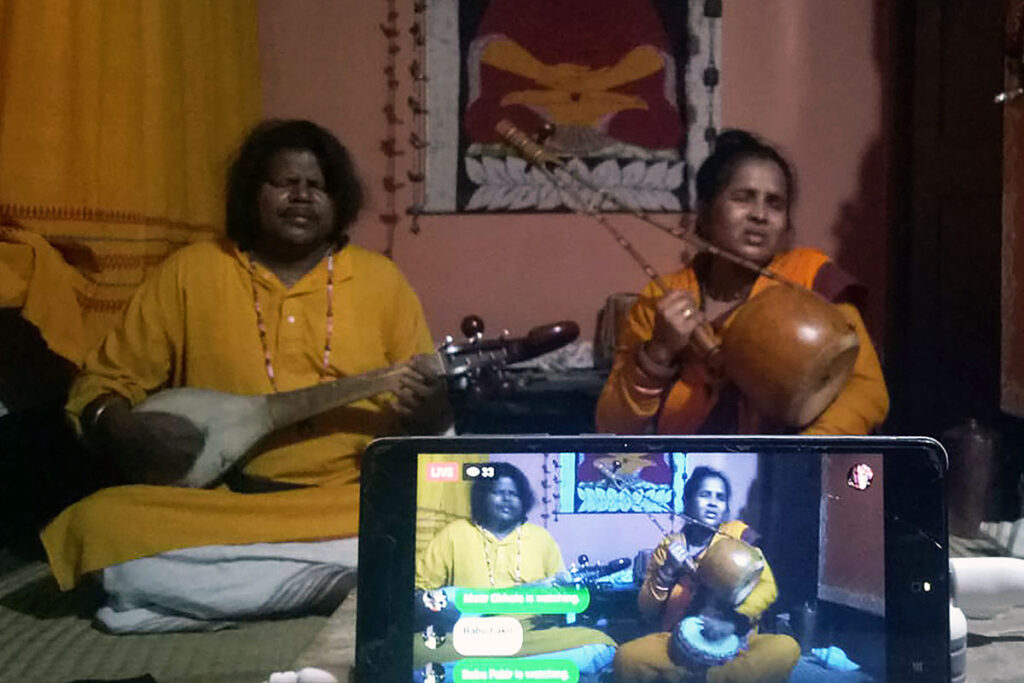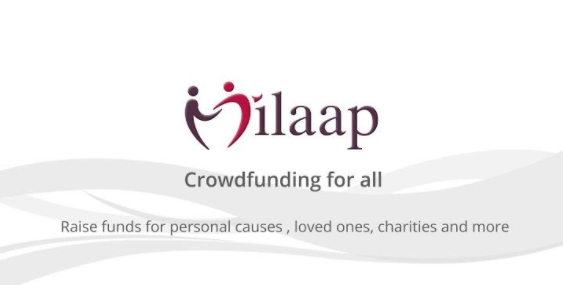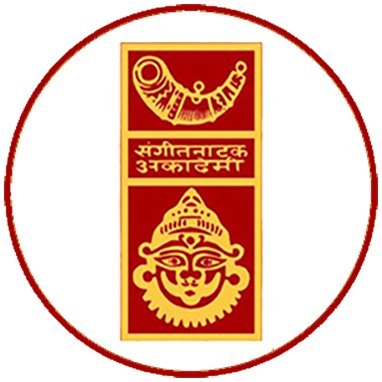
Our worlds have turned topsy-turvy. None of us have been spared the desolation of loss, be it in terms of human relationships, livelihood or mental health. While the formal sector of the economy is recuperating primarily with government intervention, those in the unorganised sector, namely a bulk of the performance industry, is on the verge of collapse. With the absence of adequate State aids, be it material or monetary, such dismal times have tested how we’ve as a society stood by each other within our finite capacities, especially for these gatekeepers of culture. With little efficacious help extended by the central government, the responsibility for the upkeep of the performing sector fraternity has directly fallen on the state governments and the civil society. Most importantly, most of them haven’t disappointed.
While the scheme of Kala Sanskriti Vikas Yojana was broadened to help artists organise, reimburse and benefit financially from it by performing through digital platforms, by extending sufficient proofs, the scheme has definitely slackened in 2021 due to the manifold ramifications of the Covid-19 third wave and a lacunae in communication with peripheral artists, who usually remain unregistered and bereft of government schemes due to taxing paperwork, lack of education, etc. Similarly, funds approximating lakhs under the Repertory Grant Scheme, Cultural Function and Production Grant Scheme, medical aid for artists schemes, etc., to aid artists of all creed and hues, were released under various schemes of the Ministry of Culture in September 2020, but activists and advocates of popular arts have claimed otherwise. This has been further exacerbated due to the already declining allocations to the Ministry of Culture, which stands at its lowest at 2,688 crores in the FY 2021-22 in the last decade, according to a research undertaken by Sahapedia.
To compensate for such insufficient assistance, state governments have begun to take the lead. Recently, the Rajasthan government assured to nearly 2000 financially tottering artists, a one-time relief measure of ₹5000 as foregrounded through a tweet (dated: 10.06.21) by Ashok Gehlot. Deputy Chief Minister of Delhi, Manish Sisodia, recently announced the institution of a directory of artists that would help Delhi-based Active artists continue to earn a living by performing online in the local environment and government events, rope them in welfare schemes and increase their outreach. The Left government of Kerala has offered an interim relief of ₹1000 each to performers and artists by drawing on the Chief Minister’s Relief Fund. The West Bengal government, too, shall give the nod to the resumption of open-air venue-based performances with stringent Covid protocols in place.

With a static pause on concerts and musical gatherings, which remain the most reliable source of income for localised performance artists, they have been forced to engage in alternate sources of employment like wage labour, obtain loans to look after their family and troupes, etc. Most of the local performing art forms have received a tokenistic representative in central government repositories either to promote the intangible cultural heritage of India or the likes without realising that the considerable section of performers are confined to small spatial zones. The local Baul community, which earns the most through public performances at fairs, musical gatherings, etc., hasn’t really adapted to the online mode due to insufficient technical proficiency, absence of a local paid audience, etc. Although some city-based artists like the Kalbeliya community have continued to impart lessons to students and earn, most haven’t been as fortunate.

Such regional performing communities across states have benefitted greatly from several crowdfunding projects undertaken at individual levels or on Milaap, one of India’s most trusted and successful crowdfunding platforms. Under the fundraiser, ALL FOR FOLK, several organisations like Artkhoj, R.K. Foundation, etc., have collaborated to financially assist and conserve marginalised performing art forms, especially in and around Rajasthan in such dire times. Organisations like Sumansa Foundation have, in a pan India effort, raised over a crore to support nearly 3000 artists through donations from concert proceeds by artists, music companies like T-Series, online performances in collaboration with Margazhi Manch, Banglanatak dot com, etc. Some others like ‘Funds For Folk’ aim to provide holistic relief packages like groceries, sanitary products, etc., across the Southern states. Likewise, Twitter and WhatsApp groups are inundated with links for donations, which in a few days reach their aim, a fact that restores our faith in the civil society.
Renowned artists have taken several initiatives to financially assist performing communities in their regions. In Bengal, a WhatsApp group called ‘Musicians for Musicians’ comprising renowned Bengali artists like Haimanti Shukla, Pt. Tanmay Bose, etc., have initiated a pool where such artists have contributed financially to quench the immediate medical and financial needs of folk performers and accompanists who’ve borne the brunt of the pandemic. Maestros like Pt. Hariprasad Chaurasia, realising the inaction of the government, has himself performed and headed online music carnivals like Parampara and Udupa Festivals to raise funds for struggling artists.

The zonal units of Sangeet Natak Akademi have reached out to folk and tribal artists registered with them, but others like musicians and accompanists in theatres, troupes, auxiliary associates like technicians, background performers, makeup artists, costume designers, etc., haven’t been sufficiently aided. By organising Webinars with artists, online training programmes like Deeksha, funds have been pooled to be released to performers and teams in need. Artists like TM Krishna, Shubha Mudgal have greatly assisted through collaboration with on-ground partners across states and the creation of Assistance for Disaster Affected Artistes (ADAA), a campaign that extended lakhs of ₹ to artist families. Under the aegis of Mudgal and the team, it lobbied for government aids by writing to Chief ministers with a well-curated action plan. Similarly, privileged artists like Masoom Parmar, etc., have undertaken the task of aiding Southern Bharatanatyam troupes during the pandemic.
Various cinema artists have contributed to PM-CARES and other government-run funds to tackle the pandemic but have not been very instrumental in helping their sidekicks, background workers, etc. Except for a few like Salman Khan, who proactively helped specially-abled Bollywood artists and daily wage workers of Bollywood, Shreyas Talpade, whose OTT platform Nine Rasa’s proceeds will directly aid theatre artists, etc. The Producers Guild of India, through a prime contribution of Netflix and Yash Raj films, have taken up the responsibility of vaccinating, providing rations to the families of workers associated with the Federation of Western India Cine Employees.
Several such initiatives are gaining ground that reinstates faith in humanity and civil society and lay bare the incompetence and negligence of the State towards cultural heritage simultaneously. However, these non-profit fundings are temporary and usually one-time. Most aids don’t find a channel to reach rural freelance performers of comparatively underdeveloped states where such institutional nexuses aren’t as strong. In such cases, nothing but State intervention only can compensate for the losses that this industry has borne. While partisans of the government cite contingent reasons for not initiating such schemes, the opacity and accountability in the management of State-handled funds and undertaking of large-scale futile projects like Central Vista spell the contrary.
Keeping this in mind, we, at ITISARAS, believe that awareness and action are integral for change, and for the same, we have launched a petition on https://www.change.org/ that strongly urges the Ministry of Culture to extend institutional support to the people of the Performing Arts sector to prevent it from crumbling further. Please join us and sign the petition – http://chng.it/zhFTnGdPMm. Each reader’s signature is precious, and we together shall make it count.
From Dhanbad, a history graduate from LSR. Currently a first year Masters student in Delhi University. I religiously experiment with cuisines! I spend my free time drooling over fictional characters and listening to music. Personally follow and urge everyone to follow the 'live and let live' principle in life. Current Role: interning with ITISARAS as a writer. Ultimate goal: To help create consciousness about animal-welfare and be of help in the strive for universal education. Biggest achievement: helping an adolescent with no educational background learn the basics of language, to read and write. Educational Qualification: History graduate, currently a Masters student at Delhi University.



Thank you for sharing excellent informations. Your web-site is so cool. I’m impressed by the details that you have on this blog. It reveals how nicely you perceive this subject. Bookmarked this website page, will come back for more articles. You, my pal, ROCK! I found simply the information I already searched everywhere and simply could not come across. What a great site.
I enjoy what you guys tend to be up too. Such clever
work and coverage! Keep up the fantastic works guys I’ve incorporated you guys to blogroll.
It?¦s actually a nice and useful piece of info. I?¦m satisfied that you just shared this helpful info with us. Please keep us up to date like this. Thanks for sharing.
Generally I do not read post on blogs, but I would like to say that this write-up very forced me to try and do so! Your writing style has been amazed me. Thanks, very nice post.
As I web-site possessor I believe the content matter here is rattling magnificent , appreciate it for your hard work. You should keep it up forever! Good Luck.
It is in point of fact a nice and helpful piece of info. I am satisfied that you just shared this helpful info with us. Please keep us up to date like this. Thank you for sharing.
Thank you for every other excellent post. The place else may just anyone get that kind of info in such a perfect approach of writing? I have a presentation subsequent week, and I am on the search for such info.
There is evidently a bundle to realize about this. I suppose you made certain good points in features also.
It is actually a nice and helpful piece of information. I¦m glad that you just shared this useful information with us. Please keep us up to date like this. Thank you for sharing.
Whats up this is kinda of off topic but I was wondering if blogs use WYSIWYG editors or if you have to manually code with HTML. I’m starting a blog soon but have no coding skills so I wanted to get guidance from someone with experience. Any help would be enormously appreciated!